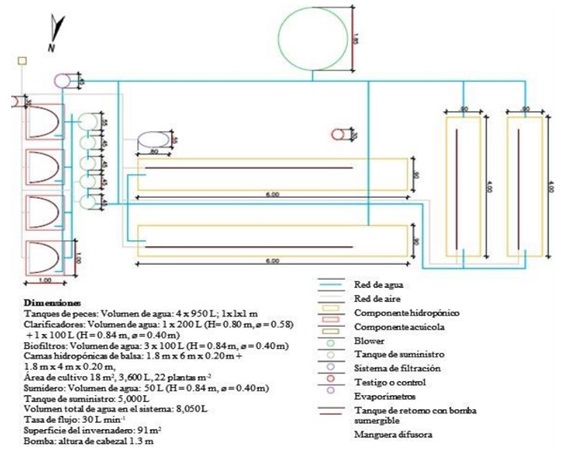Evaluation of a Small-Scale Aquaponic System for Tilapia and Lettuce Production
DOI:
https://doi.org/10.28940/terra.v42i0.2020Keywords:
floating bag, water consumption, fish farmAbstract
The aquaponic production system includes aquaculture and hydroponics, that is, production of aquatic species and plants in aqueous and controlled solutions, where the plants take advantage of nutrients from aquaculture, which with the phytopurification of the water are reused by the fish. The objective of this work was to evaluate the inputs (water quality, feed and energy), production and yield of lettuce (Lactuca sativa) and Nile tilapia (Oreochromis niloticus) in an aquaponic system to determine water productivity in 2018. The system had four aquaculture tanks, a water filtration system and ponds for hydroponics. As a result, the water quality values were 7.4 mg L-1 for dissolved oxygen, 0.028 mg L-1 ammoniacal nitrogen, 29 mg L-1 nitrate nitrogen, 597 µS cm-1 electrical conductivity, 15 mg L-1 solids suspended, 349 mg L-1 of total dissolved solids; The biochemical oxygen demand in the fish tanks was 7.1 mg L-1, in the filters 8.9 mg L-1 and in the ponds 8.5 mg L-1 respectively. 1398 kwh of total energy was consumed with a total cost of 699.00 Mexican pesos. The daily water loss in the system was 2.6%. In water productivity, 10.3 kg m-3 was obtained in tilapia and 5 kg m-3 in lettuce. It is concluded that this production system can be a viable and ef ficient alternative to implement for sustainable production of fish and agricultural crops at the same time.
Downloads
Publication Facts
Reviewer profiles N/A
Author statements
- Academic society
- Terra Latinoamericana
- Publisher
- Mexican Society of Soil Science, C.A.

















